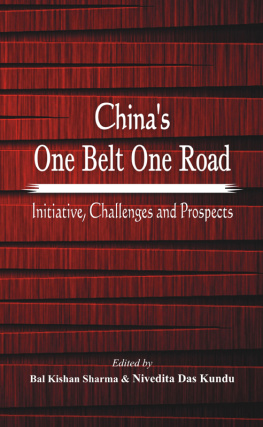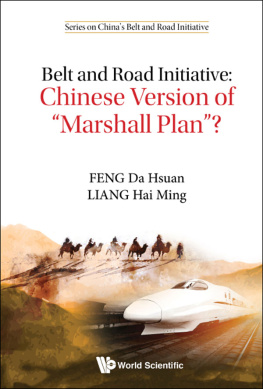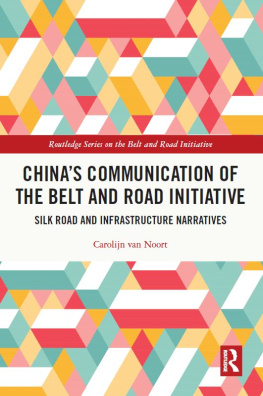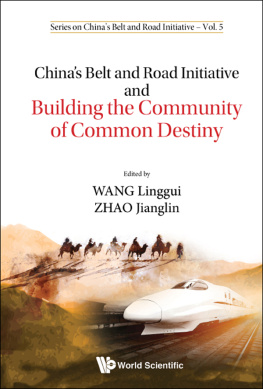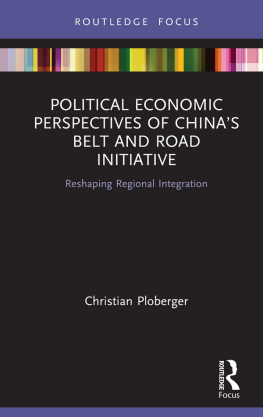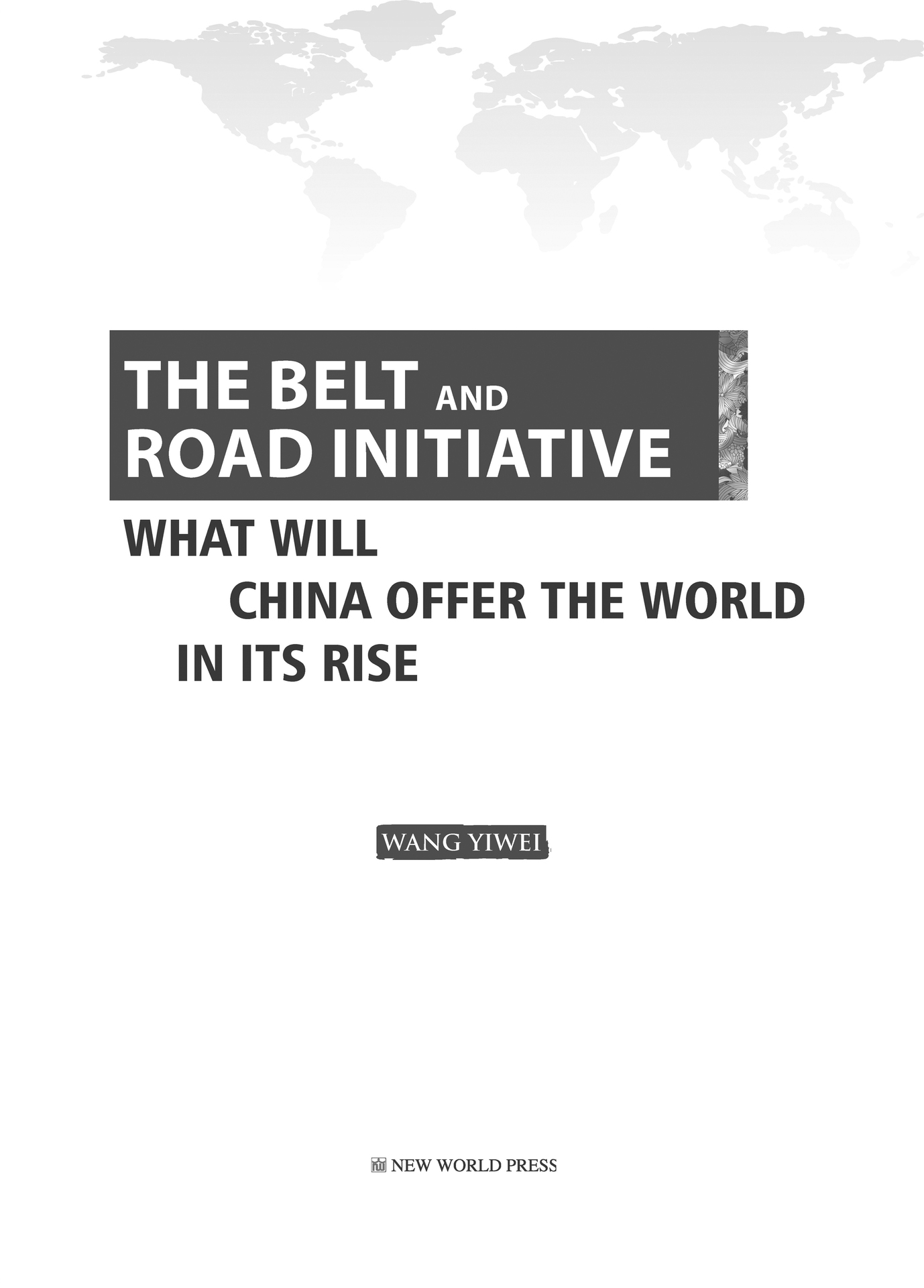CIP
/.2016.22016.12
ISBN 978-7-5104-5553-7
...---- .F125.5
CIP2016009205
24100037
0106899 59680106899 8705
0106899 54240106832 6679
http://www.nwp.cn
+8610 6899 6306
nwpcd@sina.com
710mm*1000mm 1/16
20013.75
2016212016124
ISBN 978-7-5104-5553-7
68.00
0106899 8638
Preface: The 21st Century Begins with the Belt and Road
In the era of globalization, the world is flat.This may be the biggest illusion of our times.In fact, we are living in a split global village: hinterland and ocean, developed countries and developing countries, center and periphery.This resonates with an old Chinese saying that A short distance away, and yet poles apart. In crossing this gap there are five factors of connectivity that will bring true inclusive globalization and become the main theme of the 21st century.They are policy communication, infrastructure connectivity, unimpeded trade, monetary circulation and understanding between peoples.
With US-style globalization seemingly unsustainable, China proposes the great initiative of the Belt and Road, which has given the ancient Silk Road more Chinese characteristics along with modern features and a connection with common people.The concept of a Silk Road was initially put forward by the German scholar Ferdinand von Richthofen in 1877, and the U.S.proposed the New Silk Road Initiative for the withdrawal of its troops from Afghanistan in 2011.China, meanwhile, has used a very Chinese concept the Belt and Road to demonstrate its intellectual property.
As written in the Taoist scripture Tao Te Ching, Tao gave birth to the One; the One gave birth successively to two things, three things, up to ten thousand. Adopting this philosophy, the Belt and Road is by no means only one belt and one road.The concept of a Silk Road Economic Belt is an extension of the experience of start with work in individual areas and link them up drawn from Chinas reform and opening-up, which has innovated a regional economic cooperation model.Exerting influence on surrounding areas by growth poles, the six major economic corridors, namely, China-Mongolia-Russia Economic Corridor, New Eurasian Land Bridge, China-Central Asia Economic Corridor, Bangladesh-China-India-Myanmar Economic Corridor, China-Indochina Peninsula Economic Corridor, and Maritime Economic Corridor, have gone beyond traditional theories of development economics.
As for the 21st-Century Maritime Silk Road, it lays emphasis on ways to achieve port renovation, shipping line upgrading and shipping capacity improvement in the 21st century.The value of the 21st-Century Maritime Silk Road lies in the 21st-century, which shows that China will neither follow the old path of the Western powers which committed maritime expansion, confrontation and colonization, nor pursue the mistaken path of confrontation against the U.S.for maritime dominance.Rather, China seeks to effectively avoid traditional risks of globalization and usher in a new type of ocean civilization featuring the integration of man and the ocean, harmonious co-existence of countries, and sustainable development.Although as the worlds largest trading nation, China has pursued a policy of nonalignment and proposed to establish a new type of major country relationship with the United States, the maritime dominator of the world.This requires China to put forward a new idea on maritime cooperation in the 21st century, innovate the cooperation models of shipping, logistics and security, and promote the docking of maritime and land Silk Roads through ways such as franchises, and co-building and sharing of ports.
The Belt and Road construction should usher in a new and sustainable human civilization with the five-in-one notion of promoting economic, political, cultural, social, and ecological buildings.
The Belt and Road is, essentially, a Eurasian transport network, an integrated, three-dimensional and interconnected system that is composed of railways, highways, aviation, navigation, oil and gas pipelines, transmission lines and communications networks.Along these lines there will gradually form industrial clusters serving these networks.Thus, through the industrial effects of agglomeration and radiation, an economic corridor featuring the comprehensive development of construction, metallurgy, energy, finance, communications, information, logistics and tourism will be established.The five factors of connectivity will help promote the facilitation of trade and investment, deepen economic and technical cooperation, establish free trade zones, and eventually complete the building of the big Eurasian market.Among them, the energy corridor focuses on the pricing power of bulk commodities; logistics and financial corridors focus on the standard setting right in the fields of trade and investment; monetary circulation will promote the regionalization and globalization of the RMB; and the construction of Internet, grid and a smart Silk Road are big driving forces promoting E-WTO (Internet-WTO).The aim is to develop China as another country with global leadership.
The Belt and Road construction has shaped Chinas new strategic pattern of all-round opening-up, and a new strategic framework for peripheral diplomacy.The Belt and Road Initiative has opened a new chapter in the history of Chinas opening-up strategy.In terms of the essence of opening-up, the strategy has gradually been turned from bringing-in to going global, and the integration of these two strategies has deepened.China attaches much importance to cultivating new advantages for participating in and leading international economic cooperation and competition, so as to promote reform through opening-up.China has extended its coverage of opening-up by implementing the strategy of opening to the West and South.In terms of the depth of opening-up, China conforms to the development trend of regional economic integration in the world, and is speeding up implementation of the free trade zone strategy based on its surrounding areas, so as to achieve the free movement of goods, capital and labor.
As the latest such proposal made by China, why will the Silk Road revival program be able to surpass other programs?
In ancient times, as early as 2,000 years ago, The First Emperor of Qin (259-210 B.C.) perfected the concept of common language for books, and common roads for carts. In modern times, China has established the worlds most complete national defense industrial system, which has been independent and comprehensive.And, nowadays, with the advantages of a socialist system with Chinese characteristics, Chinas domestic connectivity has been generally achieved.
Speaking from a domestic background, the proposal of the Belt and Road Initiative is aimed at solving two major problems of reform and opening-up: first, the unsustainability of the development model; second, the diminishing marginal effects of globalization.Therefore, it symbolizes that China is transforming from a participant to a shaper of globalization, and the situation is changing from one where China opens up to the outside world, to one where the world opens itself to China.From an international background, China is a force which can help shape Eurasian integration, consolidate support from surrounding areas, promote trade and investment facilitation, deepen economic and technological cooperation, establish free trade zones, and eventually forge a big Eurasian market.The outbreak of the financial crisis has forced China to explore new markets in the Belt and Road areas, and transfer excess capacity.The market opportunities of the Belt and Road lie directly within the huge contrast between population and output 63 percent vs.29 percent: The 65 countries along the Belt and Road account for 63 percent of the total population of the world, but their output only makes up 29 percent of the worlds total.Being the largest trading partner of 128 countries worldwide, China has seen its GDP exceed half of the total GDP of all countries along the route.This is one of the reasons why it can play an active role in the Belt and Road Initiative.



